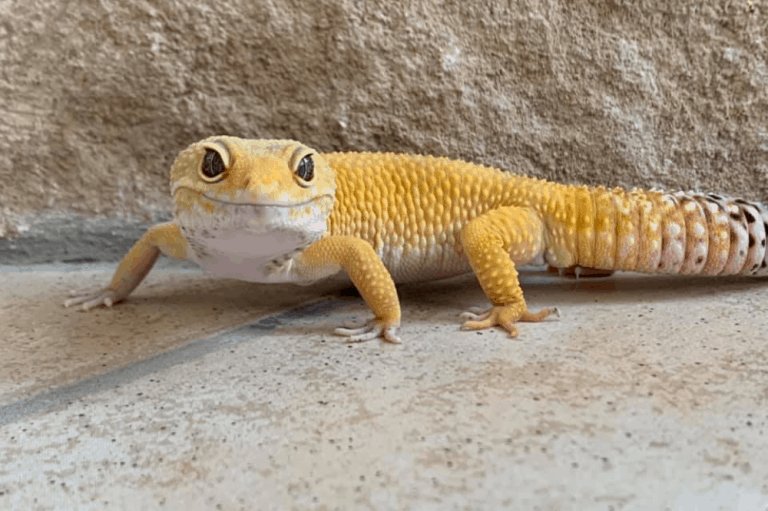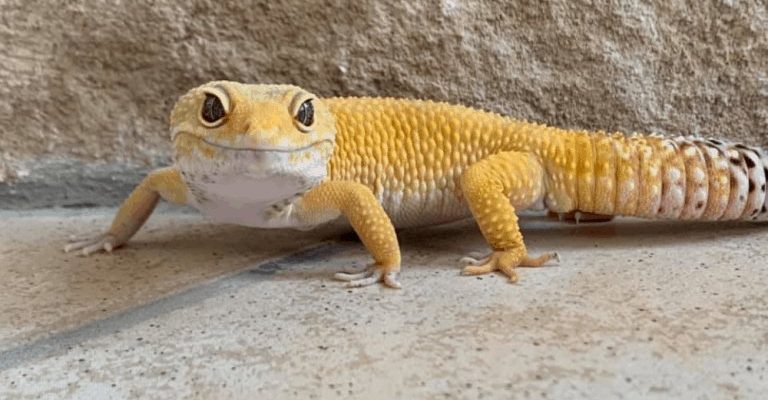
So, how can you tell if your leopard gecko is feeling anxious? Understanding the signs of stress is crucial for ensuring your little friend lives a happy and healthy life. In this guide, we’ll explore the signs that indicate stress in leopard geckos and discuss actionable steps you can take to help them feel more at ease.
Recognizing Behavioral Changes
One of the first signs that your leopard gecko might be stressed is a noticeable change in their behavior. This can be as subtle as spending more time hiding away in their favorite spots or becoming less active during the day. When your gecko starts acting differently, it’s time to pay attention.
Common behavioral changes include:
- Hiding more often: If your gecko is usually out and about but suddenly prefers to stay buried in their hide, that’s a red flag.
- Increased aggression: Some geckos may become more feisty and may even lash out when handled, which isn’t typical behavior for them.
- Lethargy: A healthy leopard gecko is curious and active. If yours is sitting still and uninterested in moving around, they could be stressed.
Here’s the thing: stress can stem from various sources, like changes in their environment, temperature fluctuations, or even loud noises. Keeping an eye on these behavioral cues is essential, as they can guide you toward the root of the problem.
Physical Signs of Stress
In addition to behavioral shifts, physical signs of stress can also manifest in your leopard gecko’s appearance. Just like stress can affect our physical health, it can do the same for our little reptilian friends. If you notice any unusual changes, it’s time to take action.
Look out for these physical signs:
- Weight loss: If your gecko is not eating well, you might notice they’re losing weight, which can be a significant indicator of stress.
- Changes in color: Stressed geckos often exhibit duller colors than their vibrant selves. A change in coloration can indicate they’re feeling off.
- Shedding issues: Stress can lead to incomplete shedding, leaving bits of skin stuck on their body, which can be quite uncomfortable for them.
You might be wondering, “Why would my gecko experience these physical changes?” Often, it’s due to stressors in their environment, such as improper temperature or humidity levels. Ensuring the right habitat conditions is vital for keeping them calm.
Understanding Environmental Factors
Creating a healthy environment for your leopard gecko is just as important as recognizing their stress signs. If their habitat isn’t comfortable or safe, it can lead to anxiety. Think about it: wouldn’t you feel uneasy in a cluttered, noisy space?
Here are some essential environmental factors to inspect:
- Temperature: Leopard geckos thrive in temperatures between 75°F and 85°F. If the temperature is too high or too low, they may feel stressed.
- Humidity levels: The humidity in their enclosure should be around 30-40%. Too much moisture can lead to health issues, while too little can cause stress.
- Hiding spots: Make sure your gecko has plenty of secure hiding places. These spots allow them to feel safe and comfortable when they need to retreat.
Let me explain: even small tweaks can significantly impact your gecko’s well-being. Regularly checking their habitat conditions helps ensure they remain happy and stress-free.
Handling and Interaction
How you handle your leopard gecko can also affect their stress levels. While most geckos enjoy being held and interacted with, some may not be comfortable with excessive handling. Over time, your gecko may need to adjust to your presence and feel secure in your hands.
Here are some tips for handling your leopard gecko:
- Give them time: If your gecko is new to your home, give them a week or two to acclimate before trying to handle them.
- Be gentle: Always approach slowly and gently. Sudden movements can startle your gecko, leading to stress.
- Read their body language: If your gecko is trying to escape or shows signs of aggression, it’s best to set them back in their enclosure.
Honestly, building trust takes time, but it’s worth it. Regular, calm interactions can help your gecko feel secure, which is essential for reducing stress.
Dietary Considerations
Did you know that a leopard gecko’s diet can also impact their stress levels? Just like us, a well-balanced diet can keep them healthy and happy. If they’re not getting the right nutrients, it can lead to stress and other health issues.
Make sure their diet includes:
- Live insects: Crickets, mealworms, and dubia roaches provide essential proteins for your gecko’s well-being.
- Calcium supplements: Dusting their food with calcium powder helps prevent metabolic bone disease.
- Hydration: Ensure they have access to fresh water at all times. Dehydration can be a significant stress factor.
You might be thinking, “What if my gecko refuses to eat?” It’s not uncommon for geckos to go off their food when they’re stressed. Monitor their eating habits closely and be prepared to adjust their diet as necessary.
Stress Reduction Strategies
Now that you know how to identify stress in your leopard gecko, it’s time to talk about what you can do to help them relax. Implementing some simple strategies can make a world of difference for your little companion.
Consider these stress reduction strategies:
- Maintain a consistent routine: Creating a predictable daily schedule can help your gecko feel secure. This includes feeding at the same time and ensuring a regular light cycle.
- Limit loud noises: Keep the environment calm by reducing loud music, yelling, or other sudden sounds that might scare them.
- Provide enrichment: Adding climbing branches or various textures in their habitat allows for more exploration and can help alleviate boredom.
Here’s the thing: Each gecko is unique, so pay attention to what works best for your pet. Find what calms them down and stick with it for a happier, healthier life.
When to Seek Veterinary Help
Sometimes, despite your best efforts, your leopard gecko may remain stressed or display concerning symptoms. In such cases, it’s essential to consult with a veterinarian who specializes in reptiles.
Signs that indicate a vet visit is necessary include:
- Persistent lethargy: If your gecko shows no signs of improvement after making adjustments, it’s best to get professional guidance.
- Severe weight loss: Ignoring a significant loss of weight can harm your gecko’s health in the long run.
- Infection or injury: If you notice any signs of infection, such as swelling, redness, or open wounds, seek veterinary help immediately.
Remember, being proactive about your gecko’s health and well-being is vital. If you ever feel unsure, reaching out to a professional can provide peace of mind—for both you and your gecko.
As a leopard gecko owner, it’s essential to stay alert to signs of stress and act quickly to address any issues. By creating a comfortable environment, handling them gently, and paying attention to their diet, you can help your scaly friend thrive. Every tiny effort you make can contribute to a happier, healthier gecko.

